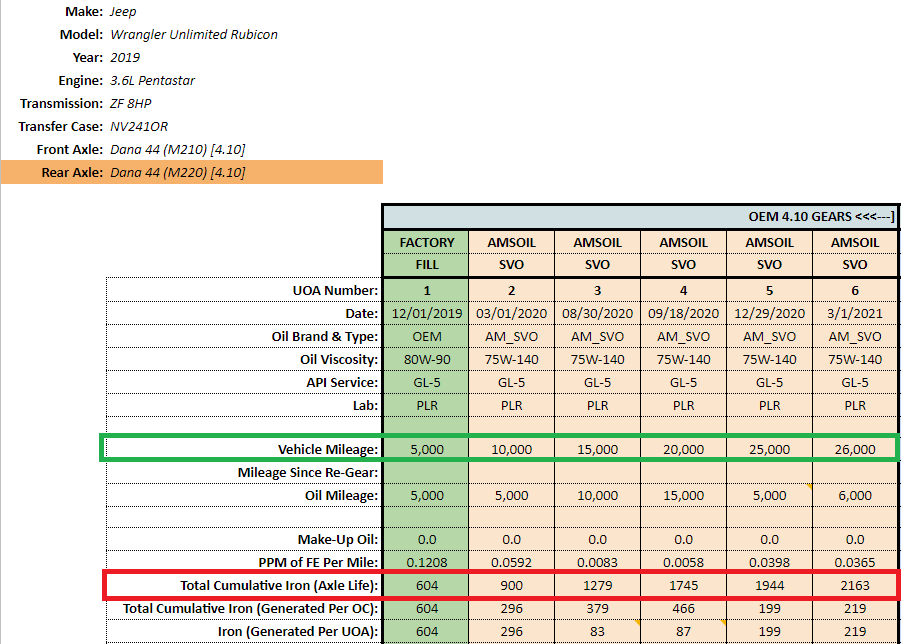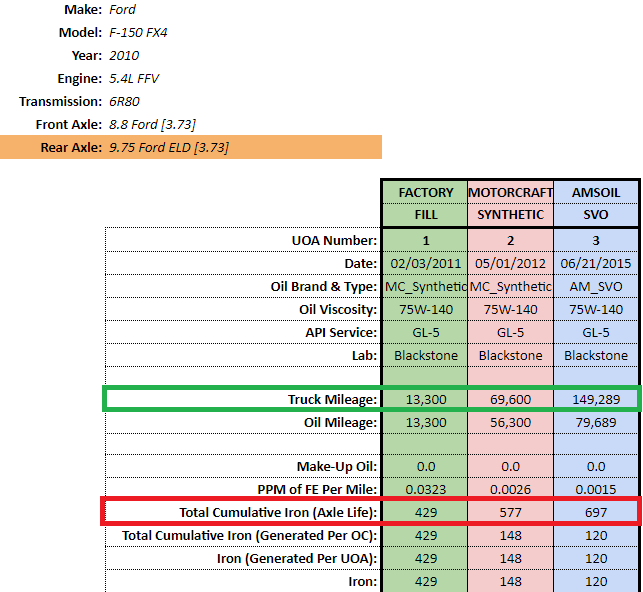Every 50,000 miles on my 3/4 ton Burb with a 14 bolt. I used to tow a 7,000 lb trailer 5 times a year for 10 years. Used 75w90 AC Delco or Motomaster fluid. Always synthetic. I have 225,000 miles on the diff. The fluid always came out black as midnight.
You are using an out of date browser. It may not display this or other websites correctly.
You should upgrade or use an alternative browser.
You should upgrade or use an alternative browser.
How often do you change rear diff fluid
- Thread starter wheelman
- Start date
Honda Ridgeline with SH-AWD at 15k and every 30k afterwards.
Volvo 240 sedan and wagon. Dana 30 axle. 80W90 Castrol Axle GL-5 or Liqui Moly 85W90 GL-5. 10k OCI
Thanks, you did front and rear diff changes ?HPL 75w-90
I'd have to look back at my records. I think I did the Ranger at 1000, and then again at 10,000. Probably won't touch it again until 30k, maybe every 30k after that, especially if we ever go RV'ing.
Haven't change the front yet, it's never been used...Thanks, you did front and rear diff changes ?
Factory manuals say fill for life. Severe service every 150K. I change mine at 60K and it comes out looking new.
I change mine in the ‘02 Jaguar XKR every 30,000 miles. It always comes out looking like the La Brea Tar Pits and smelling like a decomposing Saber Tooth Tiger.
I use the Mobil 1 75w-140. More costly than the 75w-90, but performs better under harsh conditions. I use the same fluid in the ‘66 Shelby Mustang GT350.
Z
PS the Jag manual also makes one of those “sealed for life” statements for the rear ended lube. And the Jaguar manual said the same thing regarding the A/T, but revised the specification to every 60,000 miles later when they pulled their head outta the sand.
Sealed for life ? Don’t ever believe it.
I use the Mobil 1 75w-140. More costly than the 75w-90, but performs better under harsh conditions. I use the same fluid in the ‘66 Shelby Mustang GT350.
Z
PS the Jag manual also makes one of those “sealed for life” statements for the rear ended lube. And the Jaguar manual said the same thing regarding the A/T, but revised the specification to every 60,000 miles later when they pulled their head outta the sand.
Sealed for life ? Don’t ever believe it.
- Joined
- Sep 26, 2010
- Messages
- 9,837
Most axles generate the vast majority of wear metals at 15K or less and from that point despite longer and longer OCIs, the wear metal generation reduces exponentially. My Ford axles have stood up to that synopsis very well, but the same cannot be said for the Dana Advantek axles under my Jeep as noted in the comparisons shown below.
With that said, I say it depends on operating conditions, axle design, oil capacity, oil type, and other factors. For your 2006 RAM, I seem to recall AAM (the manufacturer of that axle) having a rash of issues and Dodge reduced the OCI to help compensate for it.
In the end, you can hardly go wrong by changing the oil early or on a regular basis. Of course, there is cost involved and there are also some OEMs who state "lifetime fill" with zero definition as to what that may be, but on a piece of equipment that does not have a pressurized or filtered oiling system, I prefer to err on the side of prudence.


With that said, I say it depends on operating conditions, axle design, oil capacity, oil type, and other factors. For your 2006 RAM, I seem to recall AAM (the manufacturer of that axle) having a rash of issues and Dodge reduced the OCI to help compensate for it.
In the end, you can hardly go wrong by changing the oil early or on a regular basis. Of course, there is cost involved and there are also some OEMs who state "lifetime fill" with zero definition as to what that may be, but on a piece of equipment that does not have a pressurized or filtered oiling system, I prefer to err on the side of prudence.


I do every 15-20k on my 2012 Ram. I tow my 11k TT with it all over the place during the summer. A few quarts of 75w90 are cheap compared to a diff. I use Mystic from F&F at about ~$7/quart.
FWIW the service interval on the Ram is 15k for severe duty.
Just my $0.02
FWIW the service interval on the Ram is 15k for severe duty.
Just my $0.02
First one at 19K mi and every 30K mi after that on Sportage in sig.
My Nissan Titan says 20K if pulling a trailer or driving on rough or muddy roads.
I've noticed with several vehicles, doing the first drain at 50,000 kms, the fluid is grey. However, the next 50,000 kms it comes out fairly clean. So IMO, after the initial wear metals are out, a 80-100,000 km drain interval should be fine.
I changed to Amsoil SVG and will probably go 100K miles before next change.
Interesting data. You presented the concept of “ cumulative iron”, which is not really true because the magnet inside most diffs takes much of that out of solution. That’s what the “mung” is on the magnet. Case in point, do a test on a fluid that was in the diff for 100,000 miles. That’s why many manufacturers call it a lifetime fluid. I change at 50,000 miles, but most vehicles will make it to the wreckers with the original fill. The owners manual for a 2022 Ram 1500 calls for changes at 30,000 miles. I see you are doing changes at 5,000 miles. Wow.Most axles generate the vast majority of wear metals at 15K or less and from that point despite longer and longer OCIs, the wear metal generation reduces exponentially. My Ford axles have stood up to that synopsis very well, but the same cannot be said for the Dana Advantek axles under my Jeep as noted in the comparisons shown below.
With that said, I say it depends on operating conditions, axle design, oil capacity, oil type, and other factors. For your 2006 RAM, I seem to recall AAM (the manufacturer of that axle) having a rash of issues and Dodge reduced the OCI to help compensate for it.
In the end, you can hardly go wrong by changing the oil early or on a regular basis. Of course, there is cost involved and there are also some OEMs who state "lifetime fill" with zero definition as to what that may be, but on a piece of equipment that does not have a pressurized or filtered oiling system, I prefer to err on the side of prudence.
Last edited:
'18 Stinger GT2 (LSD) specifies every 36k, so that's happening next weekend. Using Red Line 75w90.
Similar threads
- Replies
- 19
- Views
- 463
- Replies
- 8
- Views
- 631
- Replies
- 17
- Views
- 527
- Replies
- 20
- Views
- 670
- Replies
- 0
- Views
- 236
